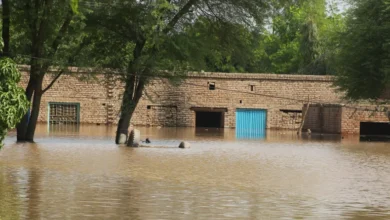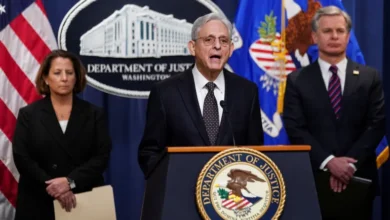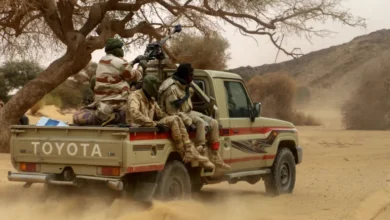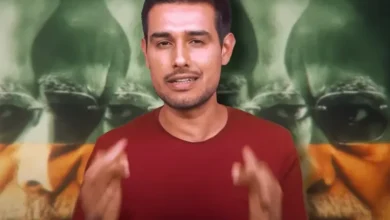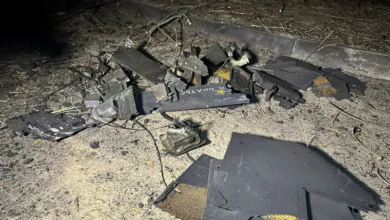The F-16 fighter jets Kyiv wants won’t fly in Ukraine in near future
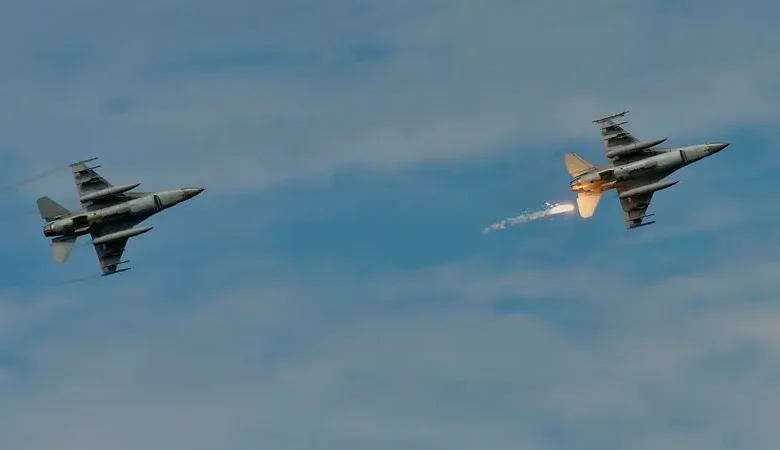
Ukraine faces a long wait before it can deploy F-16s against Russia, as US and European allies begin to thrash out who might be able to supply the fighter jets.
The countries pledging support for Ukraine are prioritizing pilot training and will have to weigh the costs and any possible security gaps before deciding whether to actually send the aircraft.
Four nations have so far committed to a coalition to help train the Ukrainian pilots — the UK, Denmark, the Netherlands and Belgium. But only Denmark and the Netherlands may end up actually sending the jets to help counter Russia’s invasion.
The UK has no F-16s. Belgium has signaled that many of its 53 planes are reaching the end of their lifespans, while any others would be needed for national and international missions.
Defense ministers from the US, Europe and other Ukraine supporters are likely to discuss F-16 training at a virtual meeting later Thursday.
“In the near future, consideration can be given to the possible delivery of F-16s to Ukraine, a spokeswoman for the Dutch defense ministry said, adding it was “not an immediate issue. The priority is hammering out details of the training plan, which should be finalized in coming weeks, she added.
Whether Denmark will send Ukraine its jets is still an open question, according to a spokesman for the Danish ministry of defense. The question of whether the country could afford or spare the planes would need to be discussed, he added.
While the UK doesn’t have jets of its own, one option could involve buying other countries’ planes to have them transferred to Ukraine, according to a British official. The UK is discussing a range of methods with other countries to get F-16s to Ukraine and is happy to help in any way it can with logistics, training and funding, the official said.
US National Security Advisor Jake Sullivan said over the weekend the US would work with allies in coming months to determine when the planes will be delivered, and who will do so. The likeliest scenario for now is that the US won’t send F-16s to Ukraine but instead rely on other countries to supply them.
US President Joe Biden last week dropped his reluctance to F-16s seeing combat in Ukraine after months of pressure from Kyiv and allied governments, announcing that the US would support efforts to train Ukrainian pilots to use the fighter jet. While the training will take place in Europe, it requires US permission because the jet is American-made. No country has yet formally committed to supplying F-16s to Ukraine.
The move comes after allied officials have sought for months to downplay the need for Ukraine to receive F-16s, instead highlighting the urgent requirement for ammunition and air defense equipment in beating back Russian forces.
While it could take many months before pilots are trained — let alone before jets are transferred — the push to start training fits into a broader effort to help Ukraine’s military withstand future attacks by Russia even after the war ends.
UK training
The UK will begin training pilots in about two months, the British official said, adding pilots would receive introductory training on how to operate a fighter jet more generally, taking a couple of months. They would then need further training by other countries on the actual F-16s, taking another few months.
Once the pilot training plan is finalized and if allies can get a further US sign off for any transfers, the countries will then have to determine whether they can part with the costly machines as donations to Ukraine.
Colin Kahl, the Pentagon’s policy chief, told a House committee in February that the 50-80 fighter jets the US deems Ukraine would likely need to replace its existing air force could cost as much as $11 billion if they were brand new.
Intense care
Donating nations will also need to ensure Ukraine can maintain the aircraft once it receives them. The jets require intense care, including an in-depth inspection roughly every 300 hours, putting an aircraft out of commission for at least 35 days, according to Belgium’s military air base Kleine-Brogel.
One major factor in any decision will be tied to incoming F-35 orders designed to replace F-16s, as allies seek to avoid any gaps in their air forces. The Netherlands is further along in its F-35 program compared to a country like Belgium, which will only receive its first two F-35s this year but will be first stationed in the US for training. Denmark’s first F-35s arrive this year.
Meanwhile, Norway is also further along in transitioning to F-35s, with the new fleet officially taking over from F-16s last year. Asked whether Norway would consider sending F-16s, Defense Minister Bjorn Arild Gram said in emailed comments his government is “constantly considering new donations to Ukraine, but declined to comment on future contributions.
Dutch and Danish ministers said in Brussels earlier this week that they expected other countries to soon join the coalition to train pilots. Portugal is open to helping with pilot training, but providing F-16s isn’t on the table as the country only has a limited number.
Turkey and Greece have more than 400 F-16s between them, but they are unlikely to send Ukraine the fighters. Greece needs the planes given its constant rivalry with Turkey, while the latter relies on the jets to fight separatist Kurdish militants at home and beyond its borders in Syria and Iraq.
Moreover, Turkey is playing a self-appointed mediator role in the conflict between the warring parties and would not even consider deploying its warplanes in Ukraine and take the risk of a direct confrontation with Russia, according to two senior Turkish officials familiar with the matter.

